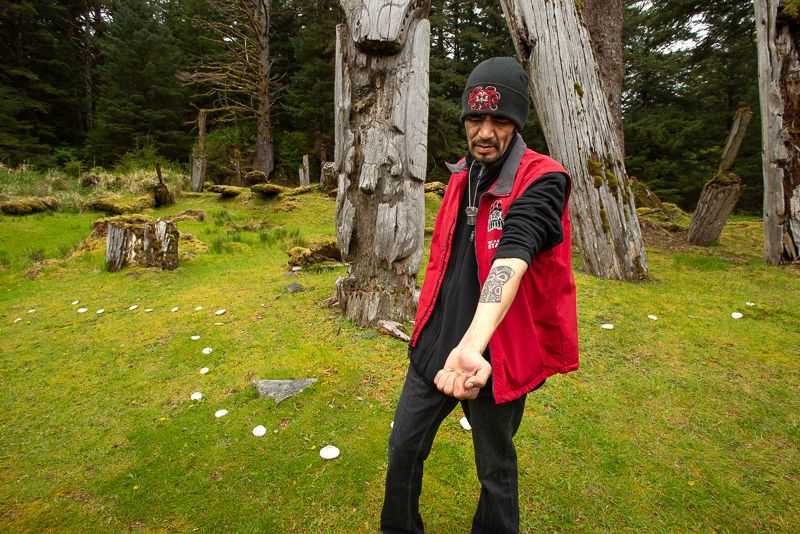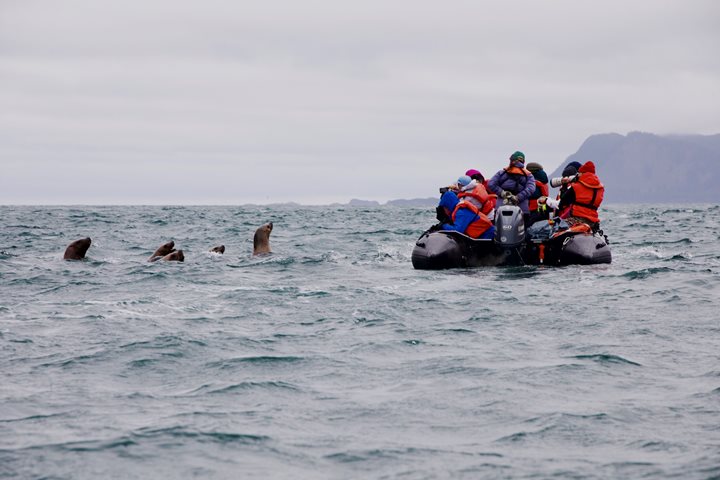Fifty miles west of the British Columbia mainland lies Gwaii Haanas National Park Reserve and Haida Heritage Site, a UNESCO World Heritage Site and a highly-anticipated stop on our journey north. Located on the far southern end of the western coast of Haida Gwaii, the storm-battered coastline of crooked spruce and hemlock belies an outpost of deep cultural significance.
For the past 14,000 years, the archipelago has been home to a warring culture of seafarers known as Kunghit Haida. Today, our exact destination was the former village site SGang Gwaay, renowned for its totem pole remains. The Haida Gwaii watchmen, the stewards of the area, led us through the ancient village and the heart of the island.
Sang Gwaay sits at the edge of a protected bay lined with mortuary and memorial poles, with each pole representing the site of a former clan house that served as the heartbeat of the community. For more than an hour, Ken Hans, one of our Haida Gwaii watchmen, interpreted our surroundings with pride and reverence.
Beyond the village beach, everything transitions into a world muffled by thick vegetation and a sense of antiquity. Watchman Walter Russ escorted us along these winding trails, sharing local knowledge and personal stories along the way.
Before returning to the National Geographic Sea Bird, we took to the coast to appreciate the abundant marine life that allowed these early communities to sustain themselves—and still does. Stellar and California sea lions, harbor seals, bald eagles, countless sea urchins, and kelp beds were just a few of the resources we came across.
The poles that remain at SGang Gwaay are destined for the earth. Slowly deteriorating in situ, they represent a community lost to time but not memory. While they won’t last forever, they’re inspiring a new generation of Haida who seem to be carrying on their cultural legacy with as much passion as ever.









